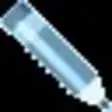iPhone Unlocker for Windows
By KakaSoftTrial version
Key Details of iPhone Unlocker
- Unlock a phone if you forgot the password.
- Last updated on 2/9/2022
- There have been 6 updates
- Virus scan status:
Clean (it's extremely likely that this software program is clean)
Developer's Description
By KakaSoft
Explore More
WavePad Free Audio and Music Editor
FreeFabFilter Saturn (64-Bit)
Trial version
AnyUnlock
Trial version
ButtonBeats Virtual Piano Black
Free
USB Audio ASIO Driver
Trial version
Enigma Recovery
Trial version
PodTrans
FreeEaseUS VoiceWave
Trial versionCrystalSound
Trial version
Dexster
Trial version
AnyRec Screen Recorder
Trial versionCrescendo Masters Edition
Trial version